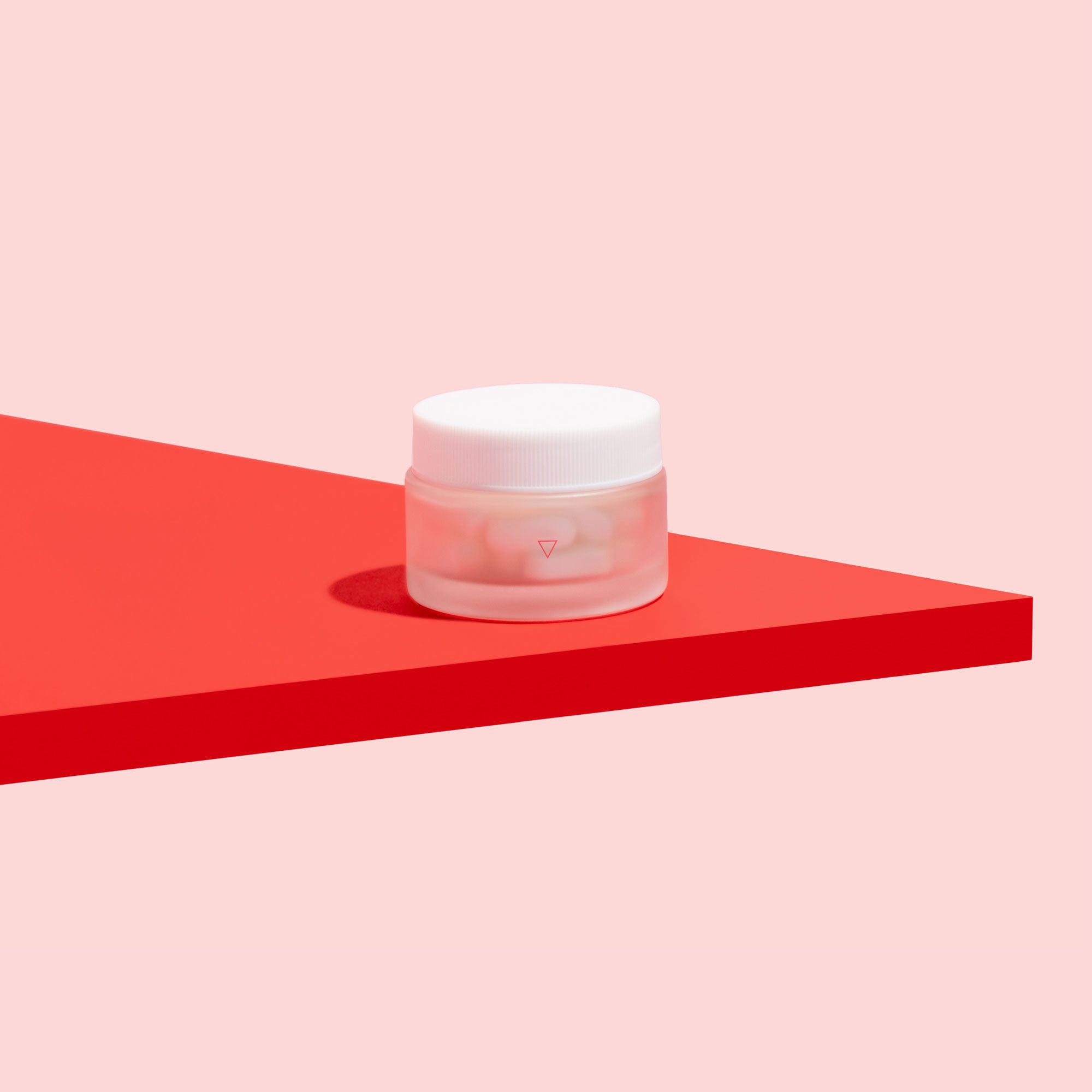
What are Trichomoniasis
Causes, Symptoms, and
Treatment?
Published on March 17, 2021
Updated on May 21, 2025
Written by Kathleen Morrison
Medically Reviewed by Andrea Sleeth WHNP-BC, MSCP
There are loads of STIs you may come in contact with during your lifetime, and while they can cause a lot of discomfort (seriously, no thanks), these issues are so often treatable. Like, easily.
Trichomoniasis is a super common STI caused by a tiny, but still annoying, parasite. It’s often lovingly referred to as “Trich” (pronounced “trick”), because who doesn’t love a sweet nickname for the things that are out to wreck our day?
Both women and men can get Trichomoniasis, but it tends to be more common in us with vaginas. While the long name may sound kinda intimidating, there are handy prescription Trichomoniasis medications out there to help, and all the symptoms can be managed with proper medical care, so you don’t need to sweat it.
Wisp treatment options are available only after consultation with a licensed medical professional. You should consult with your healthcare provider before starting a new supplement or treatment regimen. Individual results may vary.
What causes Trich?
First of all, how do you even get it?
A one-cell parasite is at the root of Trich. Sounds sneaky—and it is. The parasite infects the vagina and cervix, urethra and bladder, and glands in the genital area, or the urethra beneath the foreskin of the penis if it’s not circumcised. That’s… A lot.
Like most STIs, Trich is simply spread from one infected partner to another. However, 70% of people don’t even experience any symptoms, making it easy to pass the parasite without ever knowing you have it.
No symptoms? Sure, that’s a positive for your comfort, but nobody wants to be spreading (or catching) things with no idea it’s even happening!
What are the symptoms?
Okay, but symptoms do sometimes show up, and you need to know what they might look like.
When symptoms do arise, they usually begin a week after infection. They typically include:
- Changes in vaginal discharge, such as a color or smells that just don’t feel right
- A vaginal odor (you know the fishy kind) that might remind you of BV
- Vaginal itching and pain during urination or sex (rude)
- Abnormal discharge as well as irritation of the head of the penis (also rude)
- Burning sensation during urination (extra rude)
From the time you contract Trich, you miiight experience symptoms anywhere from five to 28 days later. During this fun little window, the parasite is more contagious, and you’re more likely to spread it to anyone you get down and dirty with. We’re talking any sexual contact, involving any of your bits.
Keep in mind, though, that Trich is contagious for as long as you have the infection!
Is it curable?
While Trich can be uncomfortable, the good news is that it’s very treatable.
Treatment typically involves a prescription medication called metronidazole, which works its butt off to kill the parasite as quick as possible. These meds are usually taken orally as pills, tablets, or capsules.
If you do end up with Trich, it’s super important to get medical attention as soon as you can and take your prescription exactly as advised. In more serious cases, untreated Trich could result in pelvic infections, which could have long-lasting effects on your fertility, and this applies to both men and women.
How to test for Trichomoniasis
So you’re dealing with some symptoms (or just following your gut) and thinking Trich might be the culprit. First of all—good on you for tuning into your body.
Testing for Trichomoniasis is super simple, and with an at-home Trichomoniasis test, you don’t even have to leave your house to get answers.
Here’s how it works: you order your discreet test kit online and collect a sample, usually a vaginal swab or urine sample (we promise that’s not as scary as it sounds).
Then, you send it off to a certified lab using the prepaid envelope. That’s it. A licensed provider will review your results if anything doesn’t look right, so they can get back to you with answers, plus prescription treatment options if you need them. No waiting rooms, no awkward convos, no shame. Just real care, real fast.
As you know, Trich can be easy to miss, especially since a lot of people don’t have symptoms at all. That’s why regular testing is a smart move, especially if you’ve had a new partner or think you may have been exposed.
When to get tested for Trichomoniasis
You might want to test for Trich if:
- You’ve noticed unusual vaginal discharge (often yellow-green or with a fishy smell)
- You’re experiencing itching, redness, or discomfort down there
- Sex has suddenly become painful or uncomfortable
- You’ve had a new sexual partner (or multiple partners)
- Your partner has tested positive for Trich or has similar symptoms
For best accuracy, test 5 to 7 days after any possible exposure. No special prep is needed—just avoid douching or using vaginal products for 24 hours beforehand. When in doubt, test it out. Your peace of mind (and sexual health) is so worth it.
How to treat Trichomoniasis
Got a positive result? No stress—it’s treatable, and you’ll be fine. A quick round of antibiotics can usually kick it to the curb fast.
Once you’ve tested and confirmed it’s Trich, a licensed provider can prescribe an antibiotic—usually metronidazole or tinidazole.
Prescription treatment is usually just a single dose or a short course of pills, and boom, you’re on your way to feeling better. Just don’t forget to skip the sexy time until you’ve finished your meds and your provider gives the all-clear. Bonus points if your partners get tested too.
Wrap it up, but keep it real
Trichomoniasis might not be the hottest topic at brunch, but that doesn’t mean it should be confusing or stressful. It’s one of the most common—and also curable—STIs out there, and knowing how to spot it, test for it, and treat it puts you firmly in control of your sexual health (as you should be).
Whether you’re feeling symptoms or just staying on top of your routine testing game, Wisp’s got your back with discreet, at-home Trichomoniasis tests, fast results, and easy access to prescription care. No shame. No judgment. Just simple, reliable care that puts you first.
Trust your gut, listen to your body, and take charge of your health on your terms. Order your at-home Trichomoniasis test today and keep it moving, confident, and clear.
Frequently Asked Questions (FAQ):
Can Trichomoniasis be detected in a urine test?
Yep! Trichomoniasis can be detected in a urine sample, but heads up—it’s not always the most reliable way to catch it. Swab samples (taken from the vagina or penis) tend to be a bit more accurate. If you're going the at-home route, make sure you're using a test that specifically checks for Trich.
How do doctors test for Trichomoniasis?
They’ll usually collect a sample—this could be vaginal fluid, a penile swab, or urine—and send it off to a lab. Depending on the clinic, they might use a microscope, a rapid test, or something called a NAAT (sciencey stuff that’s actually super precise). Bottom line: it’s quick, painless, and totally worth it.
Does a Chlamydia test pick up Trichomoniasis?
Nope! Tricky as it is, Trich doesn’t show up on a Chlamydia test. If you want to know for sure, you’ll need to take a test that’s made just for Trich.
What are the first signs of Trichomoniasis in females?
Think: itchiness, burning, or soreness around your bits, possibly a funky shift in discharge, and maybe some "ouch" moments when you pee. But also? Trich doesn’t always come with symptoms, so regular testing is a smart move if you’re sexually active.
This blog post is for informational and educational purposes only and should not be taken as professional advice. Always consult with a qualified professional before making any decisions based on the information provided here.




